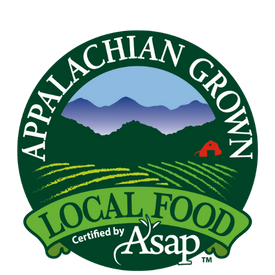Pork Cuts Explained
posted on
June 13, 2022
Purchasing a whole or half pork share can be overwhelming, especially if you have never done it before. Many have been left to complete a cut sheet on their own. What is a cut sheet? How do I fill it out? How do I know which cuts to choose?
In this article, we will discuss what a cut sheet is and the basic cuts from a hog.
What is a cut sheet?
A cut sheet is what the butcher uses to know which cuts of meat the customer is wanting from their animal. However, there are no explanations or details on the cut sheet and many customers are left wondering what in the world they are supposed to write down.
At Edwards Family Farms, we do not leave you to complete a cut sheet on your own.
When you invest in a pork share, we walk you through each step including scheduling a call to complete your cut sheet together.
We make sure you get the best cuts for your family and preferences and you have the opportunity to ask any questions about the process.
Hog Primal Cuts
The hog is broken down into 5 basic primal cuts: the loin, ribs, hams, shoulder, and belly. Out of these areas, you get a variety of cuts.
Sausages are made from scraps and other sections of the hogs. We will go through each section below, plus additional cuts you may be interested in.
Loin
Loin provide us with pork chops pork chops, and tenderloin. There are several cuts here depending on what you want, but because several cuts share the same pieces of meat and/or bone, you can’t have everything.
For example, if you want bone in pork chops, you will not receive baby back ribs because the rib bone is the same bone on a bone in chop.

Common combinations from the loin:
- Bone in pork chops: You can choose to have the tenderloin on the bone in chop or have the tenderloin whole and separated. When separated, they tend to be in the 0.75-1lb range. When choosing bone in chops, you will NOT receive baby back ribs.
- Boneless pork chops, baby back ribs, and whole tenderloin.
If you had something special in mind send us an email or call. The butchers can probably do it, but we will have to check before proceeding.
Ribs
Spare ribs are the most common cut here. They grill up amazingly and are an excellent summer treat. You will receive spare ribs in your pork share automatically.

Shoulder
Absolutely the best cut on the hog in our opinion. Also known as Boston Butt and Picnic shoulder. You can do a couple things here.
- Get larger roasts for a big party: 4-5lb roast
- Get the shoulder split into half for smaller roasts: 2-3lb roasts.
- Get shoulder made into Coppa steaks (the best cut of pork in our opinion)
- Turn the shoulder into sausage

Hams
The ham is very similar to the front shoulder.
- Get larger roasts for a big party: 7-9lbs
- Get the ham split into smaller roasts: 3-5 lb roasts
- Get the ham made into ham steaks
- Turn the ham into sausage
Additional, you can get one of the most underrated cuts right below the ham called ham hocks.
This cut is best when cooked slow and literally falls off the bone. It is common to
You also have the choice to cure and smoke your hams and hocks by the butcher (additional fees apply). Or you can leave it uncured for a fun and delicious DIY project.

Belly
From the belly comes your bacon. And you have several options.
- Leave the bellies whole to smoke, cure and slice to your preferences.
- Leave bellies whole and have them smoked and cured by the butcher (additional fees apply).
- Have the bellies sliced and packaged.
- Have the bellies slices, smoked, cured and packaged.

Sausage
Everything that isn’t made into delicious cuts is made into ground sausage. Anything that you don’t really want could be turned into sausage.
Actually, if you wanted to turn the entire hog into sausage, you could do that.

Most whole pork shares have enough meat to make two batches (or flavors) of sausage. Although on small hogs, there is only enough meat for one flavor.
Our butchers require a certain poundage to mix the spices up in the proper ratios.
Some flavors our butchers offers are: mild, hot, mild Italian, hot Italian, Bratwurst, chorizo, brown sugar maple, Cajun, Kielbasa, jalapeno cheddar, cheddarwurst and more! Additional fees will apply.
You can also choose to have sausage ground (like ground beef), stuffed into breakfast or dinner links, or pre-pattied for extra convenience! Additional fees will apply.
Our butchers also offer meatballs in different flavors. Additional fees will apply.
You can have just plain ground pork if you’d like some versatility in adding your own seasoning.
Ground pork is great when cut with beef to make meatloaf, burgers, meatballs etc. Most common packages are 1 pound.
The options for sausage are almost unlimited. If there is something that sounds good to you, we are happy to talk with our butcher to make your dreams come true.
Oddballs
Other oddball parts are jowls, pork skirt, fatback, leaf lard, soup bones, kidneys, heart, ears, feet, spleen, skin, liver and tail.
Jowls are often sliced like bacon and can be smoked or cured. Jowls comes from the cheek of the pig, so they have a bit more fat on them than belly bacon does.
Pork skirt is one of the most tender cuts of the pig. Very small and often missed, it is located between the stomach fat and the ribs. Many butchers don't even offer this cut because it is a small piece of meat, but ours does.
Fat back is great for rendering down and making suet blocks for the birds, making cured fatback, or adding to greens or other cooking dishes for added nutritional benefits and flavor.

Leaf lard is the classic source of cooking lard and is highly sought after by bakers for pies and pastries. Leaf lard also makes for amazing skincare.
Pork soup bones are another underrated cut of the pig. The bones of forest-raised pigs are more nutrient dense than their conventionally raised counterparts. We encourage you to use these for your own bone broth, extra nutrients for soups or veggies. They make great dog treats as well.
Heart, liver, spleen, feet, ears, tail, and kidneys can be great in stews or used for pet food or treats. If you are using these for raw pet food or treats, we ask that you please talk to your vet prior.
Pork skin is where you get pork rinds from. A delicious and easy to make, healthy treat. Don't skimp on this pork skin. If you are not into pork rinds, you can dehydrate these and roll them into dog treats!
Now that you have a general concept of the most common cuts of pork, we encourage you to read our guide for buying a pork in bulk.





